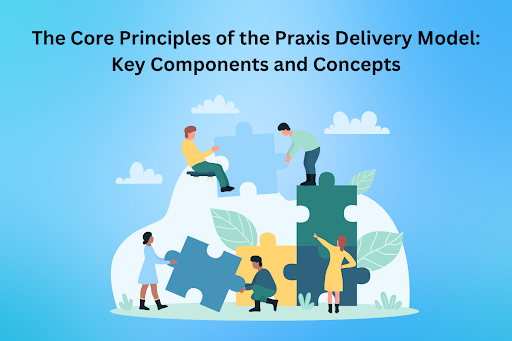The Praxis Delivery Model is a new method for dealing with projects. The Praxis Delivery Model gives corporations a framework for structured mission control based totally on essential ideas and quality practices. Knowing the basics of the Praxis Delivery Model is crucial whether or not you are just beginning your profession in project management or are a skilled professional looking to enhance your competencies. This blog will dissect The Praxis Delivery Model into its components and basic concepts. This exploration will delve into the standards that support the Praxis Delivery Model. Whether you are interested in taking a Praxis Course or need to understand this revolutionary approach to project management, this blog will assist you.
Table Of Contents
- Understanding the Praxis Delivery Model
- Key Components and Concepts of the Praxis Delivery Model
- Conclusion
Understanding the Praxis Delivery Model
To ensure that projects are continually delivered, organizations can utilize the Praxis Delivery Model, a framework for project management. This approach to project delivery is flexible and adaptable, drawing upon ideas from numerous methodologies inclusive of PRINCE2, Agile, and Lean. Organizations can confidently navigate modern projects with the Praxis Delivery Model’s emphasis on collaboration, flexibility, and improvement.
Key Components and Concepts of the Praxis Delivery Model
Integrated Project Lifecycle
The Praxis Delivery Model takes a holistic view of project management, overlaying every step from start to finish. This bird’ s-eye view helps managers plan, execute, and monitor projects in a manner that meets stakeholder expectations and the business enterprise’s goals.
Governance and Assurance
The Praxis Delivery Model relies heavily on governance and guarantees to keep projects accountable and under control. Projects are guided through governance systems that make sure they observe rules and regulations and align with organizational strategy. Similarly, assurance mechanisms ensure that projects are moving forward as planned while meeting quality standards.
Stakeholder Engagement
Stable stakeholder engagement is required for the Praxis Delivery Model, stressing the value of teamwork and communication among project stakeholders. By including stakeholders early and frequently, project managers can increase project outcomes and satisfaction while fostering trust, mitigating risks, and gaining insightful knowledge.
Flexibility and Adaptability
The Praxis Delivery Model recognizes that projects are inherently changing and that project management strategies should be flexible and adaptive. To adapt to changing stakeholder expectations, market conditions, and requirement changes, project managers must be flexible and willing to iterate.
Ongoing Improvement
The Praxis Delivery Model is constructed around improvement, which aims to optimize project delivery processes via learning from past mistakes. Organizations can improve project performance and drive continuous excellence in project management by documenting lessons learned, figuring out improvement regions, and executing corrective moves.
Risk Management
The Praxis Delivery Model consists of risk management as a critical component. It provides a structured approach to recognizing, comparing, and reducing risks. Project success is guaranteed when organizations actively control risks throughout the project lifecycle, minimizing threats and capitalizing on opportunities.
Tailoring and Scalability
Thanks to the Praxis Delivery Model’s adaptability and scalability, enterprises can regulate their project management strategies to match the specifics of each challenge. Project managers can tailor the Praxis Delivery Model to their businesses’ and tasks’ specific requirements, no matter the undertaking’s dimensions.
Emphasis on Ongoing Improvement
The Praxis Delivery Model is primarily based on the principle of ongoing improvement. Praxis promotes a lifestyle of constant learning and improvement, unlike other models which can focus only on project execution. Organizations utilizing the Praxis Delivery Model can achieve constant improvement in their project delivery processes by way of routinely assessing overall project performance, pinpointing development areas, and implementing changes. Optimal performance, improved effectiveness, and increased value for stakeholders are all results of this iterative approach.
Comprehensive Training and Support
Project managers and their teams benefit notably from the Praxis Delivery Model’s emphasis on thorough training and ongoing aid. Praxis provides organized education programs and materials to assist project managers become proficient in using the model within the real world. In addition, project managers can rely on Praxis for continuous help and guidance, which equips them with the tools and know-how to conquer obstacles and complete initiatives. Praxis distinguishes itself from competing models by using dedicated resources for training and support, which other models would possibly need to provide to project teams.
Conclusion
Based on fundamental principles and enterprise requirements, the Praxis Delivery Model gives a strong and adaptable framework for project management. Organizations can consistently deliver successful projects with the help of the Praxis Delivery Model.
Suppose you want to succeed in complex projects. In that case, whether you plan to take a Praxis Course or improve your project management abilities, you should familiarise yourself with the Praxis Delivery Model and its important components and ideas.






Leave a Reply